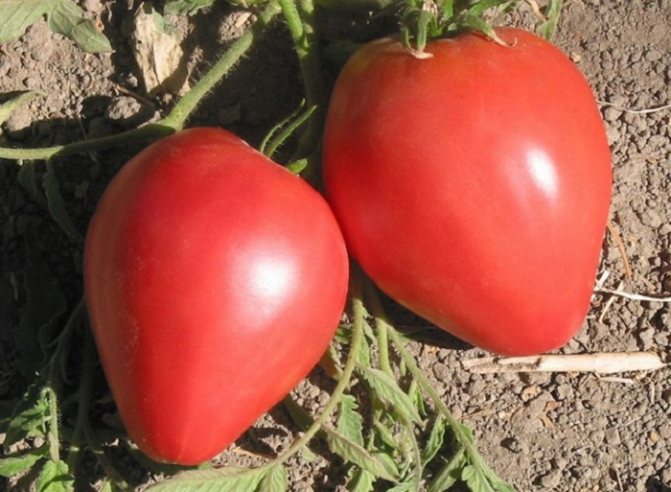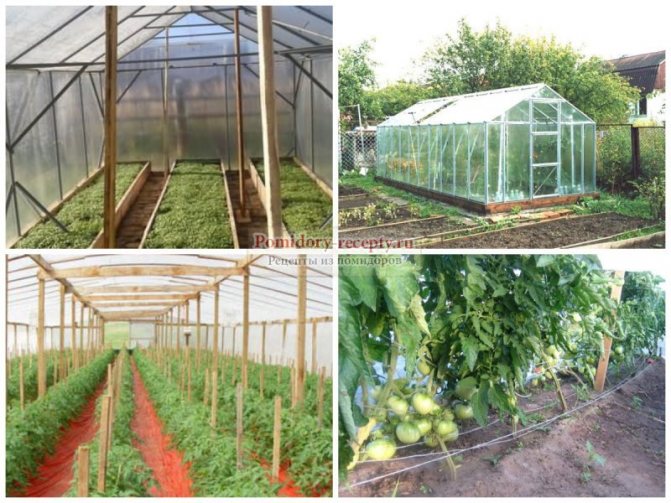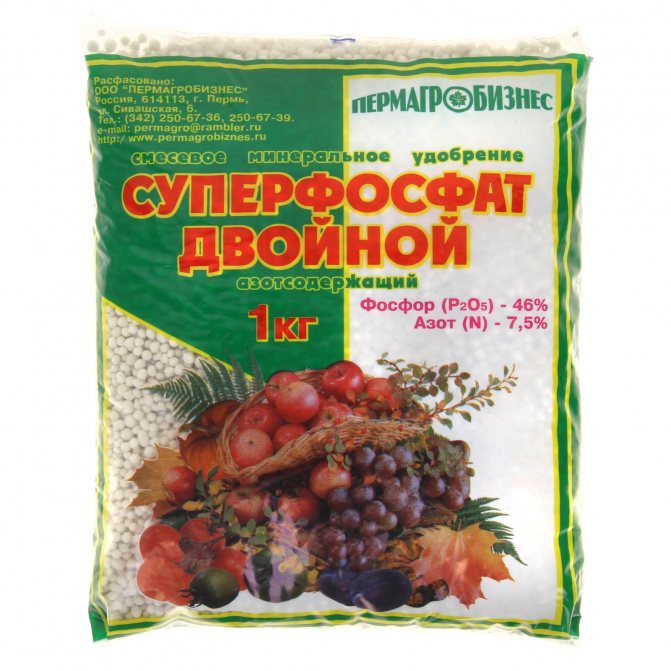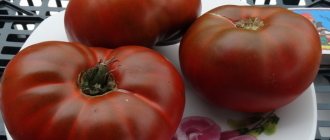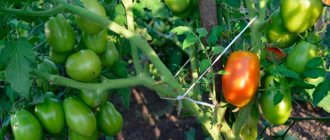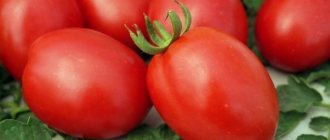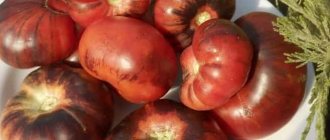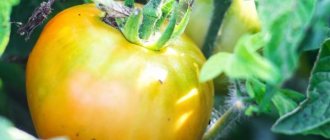»Vegetable growing» Tomatoes »Varietal features of the grandee's tomato
0
252
Article rating
Tomato Grandee is a giant hybrid, the pride of breeders of the Siberian Research Institute. It received official recognition back in 2004, when it was entered in the State Register. Suitable for cultivation both in the open field and in the greenhouse.
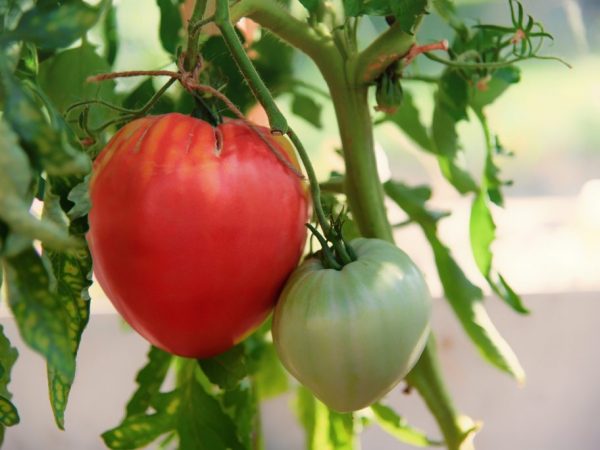
Varietal features of Tomato Grandee
Description and characteristics of the variety
Due to its unpretentiousness, the new hybrid form of tomatoes quickly gained popularity and spread not only within the country, but in the neighboring countries.
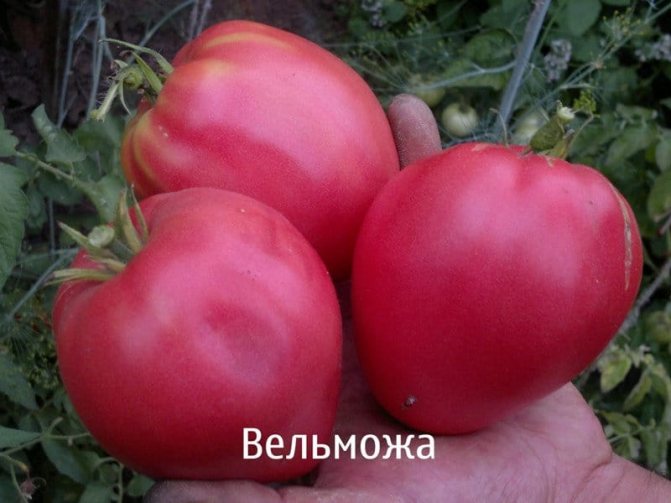

Fruits and bushes
Vegetable bushes are able to independently regulate the final growth point, therefore they rarely exceed 75 centimeters. Leaf plates typical for vegetable crops.
Fruit ripening occurs after 3.5 months of active growth. On the bushes, large fruits ripen, weighing up to 250-300 grams, there are specimens of vegetables and up to 500-700 grams. In the process of ripening, tomatoes become raspberry-colored, with dense, fleshy and juicy pulp with an increased content of sugary substances.
Origin and region of cultivation
Novosibirsk breeders have developed and developed a new variety of vegetable crops. The Siberian hybrid form of tomatoes has received a unique natural protection from frost and negative weather phenomena. Thanks to its improved characteristics, the variety graduated from state trials in 2005 and was zoned in all regions of the country for cultivation, both in the open field and in greenhouse complexes.
Most gardeners and gardeners believe that the grandee's tomato has a second name, Budenovka, but this opinion is erroneous. According to the authors of the Grandee, Budenovka tomatoes are a completely separate variety of vegetable crops, although they have external and taste similarities.
Important! In terms of appearance and taste, the grandee's tomatoes are similar to varieties of southern tomatoes. But it is to the southern climate that the cold-resistant culture is completely unadapted.
Variety yield
Vegetable yield indicators directly depend on the method of tomato cultivation. In the open field, up to 5 kilograms of vegetables are obtained from 1 square meter of beds. In greenhouses, up to 8 kilograms of crops are harvested from the same area.


In industrial volumes, yield indicators range from 30 to 50 tons of vegetables per 1 hectare of land.
Disease and pest resistance
When cultivated in open ground, plants are protected by natural immunity from fungal and viral infections. When growing tomatoes of this variety in greenhouse conditions, additional preventive measures must be followed. Due to the high humidity of the soil and air, diseases quickly spread on crops.
For the control and prevention of pests, standard plant protection methods using chemical or biological preparations are recommended.
Characteristic qualities
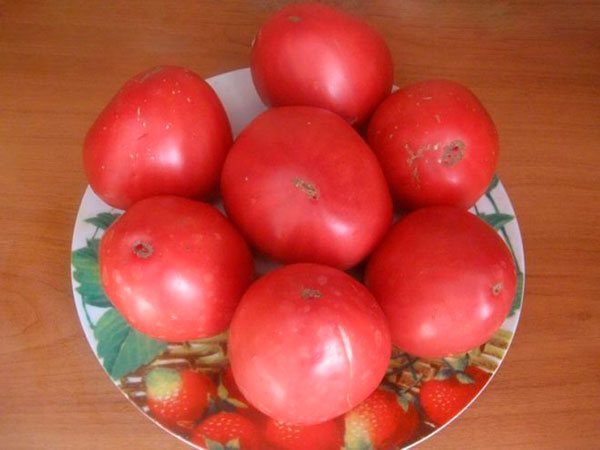

The characteristic and description of the variety leaves no doubt about the excellent qualities of this tomato.A powerful determinant plant reaches 0.6–0.8 m in height, has medium-sized leaves and complex inflorescences, the first of which is laid above 7–8 leaves, and all subsequent ones through 1–2 leaves. According to the manufacturer, the plant should be formed into 2 stems, removing all stepchildren except for the one under the first flower brush.
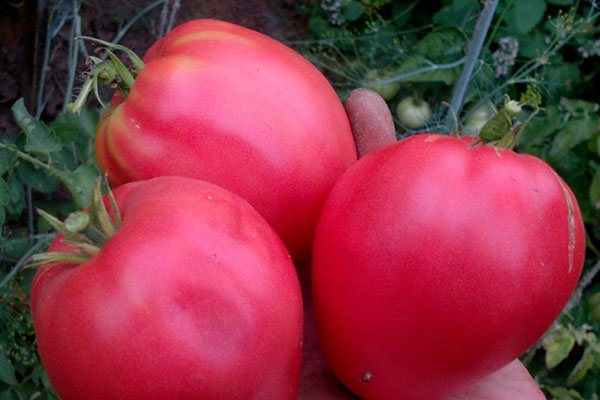

Have questions? Ask and get useful advice from professional gardeners and experienced summer residents. Ask a question >>
Although the plant is not tall, it requires a garter, especially during the period of mass ripening of fruits, which can reach 800 g or more in weight. In shape, they resemble a bull's heart, and they are also called budenovka for their resemblance to the headdress of the same name.
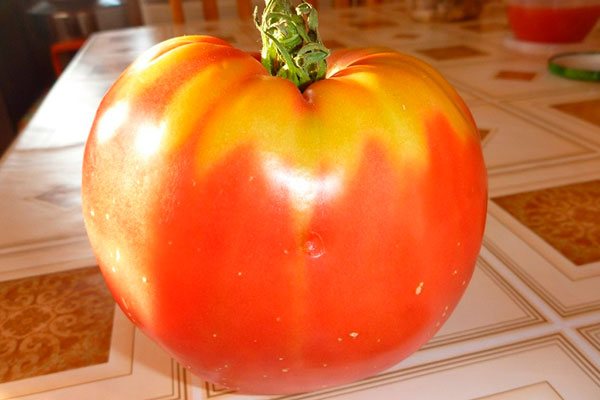

The color ranges from light pink to deep red. Tomato Grandee has a very thin and delicate skin, and there is practically no juice inside - everything is filled with pulp with seeds containing up to 4.6% sugars and up to 6% dry matter. A feature of the Velmozha variety is the ribbing at the stalk.
Advantages and disadvantages
To grow a healthy and plentifully fruitful vegetable crop, it is necessary to carefully study all the advantages and disadvantages of the variety.
See also Pinching tomatoes: the principle and rules for removing stepchildren
Advantages:
- Plants adapt easily in temperate and northern latitudes.
- With proper care, they are not affected by fungi and viruses.
- Ripe fruits are large in size and have excellent taste characteristics.
- Seeds collected from ripe fruits are suitable for further cultivation.
- After harvesting, the crop is suitable for long-distance transportation and long-term storage.
The disadvantages of the variety are insignificant:
- Due to the ripening of large fruits, the bushes require additional support.
- The variety is difficult to adapt to dry, hot climates.
- As the bushes grow and develop, measures are required to form and eliminate stepchildren.
- Varietal noble tomatoes are demanding for watering and feeding.
Important! To obtain bountiful harvests, a vegetable crop needs timely and proper care!
Care and feeding
When making a description of the variety, it is worth noting the possible care for it. First of all, it is necessary to observe the light regime. While the seedlings are sprouting, additional lighting can be used. These can be ordinary lamps sold in hardware stores, or special devices for greenhouses, as well as phytolamps. This is especially true for the mass cultivation of vegetables under plastic wrap. It is important that the tomatoes get enough light every day.
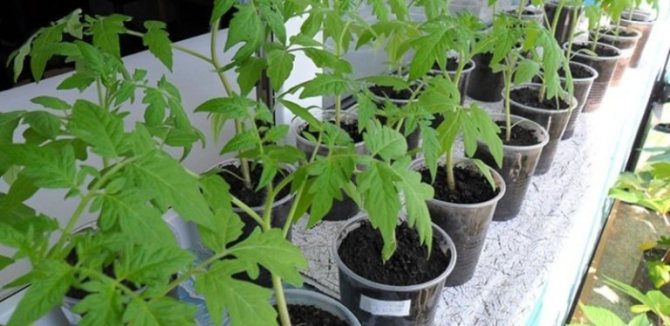

For the tomato nobleman, proper watering is also of great importance. It should be regular, but not too abundant. Plants should not flood, otherwise the roots will rot. When the seedlings are in the growing stage on the window, you need to make sure that there are no drafts, and that direct sunlight does not fall on it, which can negatively affect the plants and lead to burns on the leaves.
During the growth period, seedlings require fertilization. An organic growth accelerator will do. A suitable product can be purchased at a store for summer residents and gardeners. It should be used according to the instructions. Fertilizers can also be used during planting tomatoes in the ground or after that. A variety of organic compounds and compost will do.
Secrets of growing tomato noble
Growing tomatoes traditionally begins with planting seeds for seedlings, and the Noble variety is no exception.
Growing seedlings
Before sowing, the planting material is sorted out and treated with antibacterial agents and a growth stimulant.
- Containers for sowing seeds are thoroughly washed and treated with a manganese solution.
- A drainage layer of small stones is laid out in the finished boxes or pots, and fertile, loose soil is poured on top.
- On the surface of the soil, pits or furrows are made, 1.5 centimeters deep, into which the seeds are laid.
- The distance between plantings is 2–3 centimeters.
- The seeds are covered with earth, the containers are covered with glass or a thick film and sent to a sunny, warm place.
- After the appearance of green shoots, the covering material is removed, and the plants are moved to a cooler room.
- After 5-7 days, the containers with the seedlings are returned to room temperature.
- As soon as 2-3 tomato leaves appear on the seedlings, the plants are planted in separate pots or containers.
- Seedling care is standard. Plants need watering and feeding.


Expert opinion
Stanislav Pavlovich
Gardener with 17 years of experience and our expert
Ask a Question
Advice! In order for the seedlings to adapt more quickly after transplanting into open ground, 10 days before planting, containers with plants are taken outside for several hours or placed in a cool room.
Soil preparation
The soil for planting a vegetable crop is prepared in advance.
- Tomatoes are planted in sunny areas with good wind protection.
- The soil is carefully dug up and loosened, mixing with organic and mineral fertilizers.
- 2-3 days before the transfer of seedlings, the soil is loosened and abundantly moistened.
- If the soil contains an excess of acids, then lime or ash is added to the soil.
Also, tomatoes do not tolerate the close location of groundwater. In this case, the rhizomes quickly rot, the plants die.
Landing in open ground
Noble Tomatoes are resistant to sudden changes in weather and return frosts. Plants are planted in open ground in late spring.
- Small holes are dug in the prepared area, up to 25 centimeters deep.
- The distance between the seedlings is 30-40 centimeters, the passage between the ridges is made up to 50 centimeters.
- A support for the bushes is driven into the middle of the pit.
- The seedlings are placed in the center of the planting pit along with a lump of earth from the pot.
- The bushes are covered with fertile soil and thoroughly watered with warm, settled water.
- Plants are tied to pegs, the beds are mulched with straw or wet sawdust.
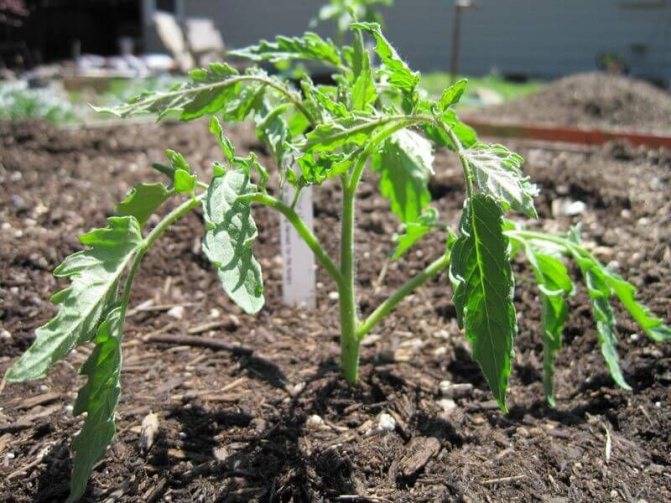

Expert opinion
Stanislav Pavlovich
Gardener with 17 years of experience and our expert
Ask a Question
Advice! For the first watering, you can use water with the addition of a small amount of mineral fertilizers.
The specifics of growing in a greenhouse
When growing vegetables in greenhouse conditions, planting work is carried out 2-3 weeks earlier than in the open field.
Expert opinion
Stanislav Pavlovich
Gardener with 17 years of experience and our expert See also Tomatoes Beef: the best varieties and growing rules
Ask a Question
Also, we must not forget about the high humidity of the closed ground. Watering and feeding bushes in greenhouses is minimized.
Transplanting seedlings
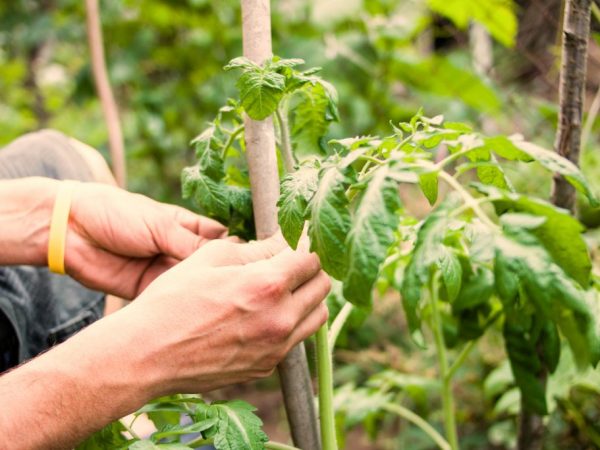

It is advisable to carry out all manipulations with tomatoes in the morning or in the evening.
When choosing a place for tomato beds, you must remember the rules of crop rotation. You need to plant crops in the ground where legumes (beans, beans, peas), cabbage, carrots, onions or cucumbers grew last season.
In closed rooms, such as greenhouses, every 2 years it is necessary to change the topsoil and constantly take care of restoring its fertility.
Further care of the variety
Noble Tomatoes are distinguished by their exactingness to moist soil and additional nutrition. Also, due to the heavy workload, the bushes require timely formation.
Watering
Young shoots are watered 2-3 times a week. Further, watering is reduced to 1 time in 6-8 days. Up to 2 buckets of warm, settled water are poured under each bush.
Together with irrigation, soil loosening, weed removal and mulching of the beds with organic materials are carried out.
Fertilizers
During the growing season, tomatoes are fed 3 to 4 times using organic and mineral fertilizers.
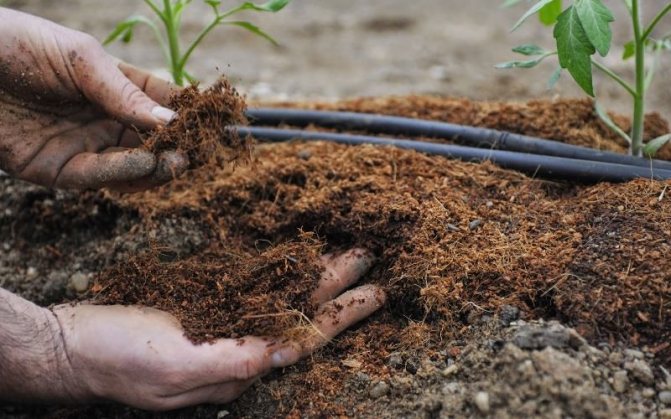

Nitrogen fertilizing is applied only at the beginning of plant growth and development. Thanks to nitrogen, the bush grows green mass. In the future, mineral complexes based on potassium and phosphorus are used.
Important! 10-15 days before the start of the harvest, the feeding of the bushes is stopped.
Formation
Due to the ripening of large, heavy fruits, the stems often break off. To avoid such a nuisance, the bushes are additionally formed, leaving no more than 3 shoots on each. Also, during the flowering period, no more than 5 ovaries are left in the inflorescences, the remaining flowers are removed or pinched.
How to care
Like all plants, the "Velmozha" variety tomatoes need to be cared for. So in dry times, more frequent watering, loosening and weeding is needed. Tomatoes are also fed during the period of flower clusters formation, ovary formation and fruit ripening. Humus, infused nettle or complex plant fertilizer are used as fertilizers. The latter is used in a strict dosage recommended by the manufacturer. As the tomato bushes grow, stepchildren are formed, which must be removed, so that they do not grow in the same place again, the stepson is not completely pinched off, leaving a small "stump". If you conscientiously look after tomato plantings, you can get quite large specimens, reaching 800-900 gr.
Disease and pest control
The main threat in growing tomatoes of this variety is late blight. Greenhouse plantings are especially often affected by the fungus. For the control and prevention of the disease, professional fungicides with copper content are used.
Expert opinion
Stanislav Pavlovich
Gardener with 17 years of experience and our expert
Ask a Question
The pests characteristic of the culture also do not bypass the variety. The methods of dealing with harmful insects are standard, including professional products and traditional methods of plant protection.
Cleaning and storage of tomatoes
Harvesting is recommended in warm, sunny weather. The collected fruits are sorted out, laid out in a suitable container and sent to storage in a cool place.
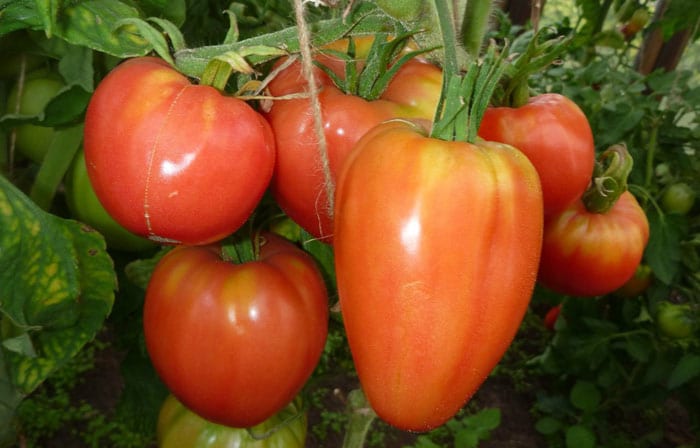

Ripe vegetables are recommended to be consumed fresh, used for preparing vegetable salads, stews, sauces, tomato paste and ketchup. But large fruits are not suitable for canning.
Reviews of those who planted
- Egor Petrovich, Tomsk: “Our climate is harsh, so I never thought about growing tomatoes until I came across the Noble variety in the store. I planted seedlings in a small greenhouse in the garden. The result exceeded all expectations. My wife and I ate such tomatoes when we rested on the Black Sea. Now exactly these vegetables grow in my garden. "
- Svetlana Georgievna, Kursk region: “Before planting the grandee's tomatoes in the garden, I spent a long time collecting reviews about them. To be honest, I was afraid that I would not master the cultivation of such large and beautiful vegetables. But everything turned out to be much simpler. The variety turned out to be completely unpretentious, with standard rules of care and cultivation, responds well to feeding and fertilization. Now this is my favorite tomato variety for salads and cooking. ”
Previous
Tomatoes Description and features of growing Verliok tomato
Next
Tomatoes Description and characteristics of Blagovest tomato - growing varieties in the open field and in a greenhouse
Reviews of the tomato Grandee
The gardeners have made up their minds about the culture. They note the taste of tomato, good growth rate, unpretentiousness. Culinary experts say that the fruits are ideal as an ingredient in adjika or salads. Admirers of healthy eating emphasize the useful composition of vegetables, their ability to lower the acidity of the stomach. Even allergy sufferers can eat dishes from the Nobleman's tomatoes.Hybrid Budenovka was developed for harsh climatic conditions, therefore it has good adaptability. The culture tolerates frost, weather changes. It is characterized by excellent taste and ease of cultivation. Even novice summer residents can plant the grandee's tomatoes on the site.

